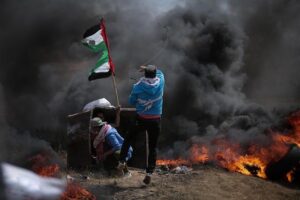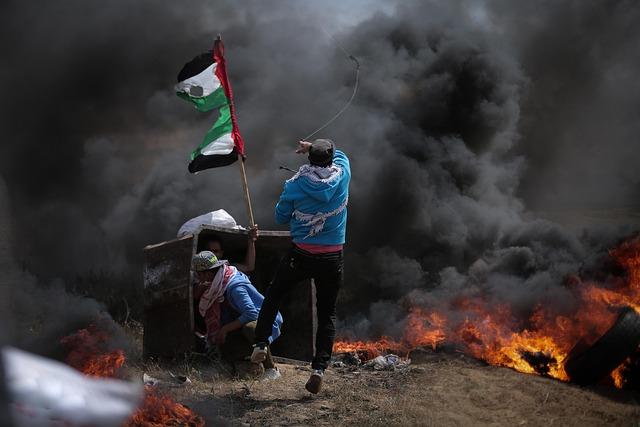Rising Political Violence in America Mirrors the Tumultuous 1960s, Experts Warn
Modern Political Turmoil Reflects Historic Social Upheaval
Recent violent incidents in the United States, including the shooting targeting conservative activist Charlie Kirk, have sparked renewed alarm among historians and political analysts. These events highlight a growing pattern of political unrest that closely resembles the social and ideological fractures that defined the 1960s. Experts caution that the current climate of intense polarization and hostility threatens to escalate further, potentially leading to more frequent and severe acts of violence.
Several critical elements are driving this dangerous environment:
- Escalating partisan discourse fueled by social media platforms
- Increasing economic inequality fostering social resentment
- Widespread skepticism toward governmental and media institutions
| Time Period | Prominent Incidents | Societal Context |
|---|---|---|
| 1960s | Civil rights demonstrations, urban unrest | Racial tensions, Cold War fears |
| 2020s | Political violence, Capitol insurrection | Deep political divides, misinformation spread |
Drawing Lessons from Past and Present Political Conflicts
The recent surge in politically motivated violence, exemplified by the attack on Charlie Kirk, has reignited debates about the fragility of American political discourse. Scholars note striking similarities between todayŌĆÖs unrest and the upheavals of the 1960sŌĆöa decade marked by mass protests, political assassinations, and profound societal rifts. These parallels reveal how entrenched ideological conflicts can quickly escalate from heated debate to physical violence, threatening democratic institutions.
Common threads linking both eras include:
- Polarized media environments that deepen divisions and erode trust.
- Social movements challenging the status quo, often provoking backlash.
- Inflammatory political rhetoric that normalizes hostility and aggression.
| 1960s Unrest | Contemporary Equivalents |
|---|---|
| Mass civil rights marches | Large-scale political demonstrations and counter-protests |
| Assassinations of public figures | Targeted attacks on political activists |
| Traditional media debates | Social media-driven polarization |
Consequences of Political Violence on Public Safety and Social Trust
The recent violent episode involving Charlie Kirk is a stark reminder of how political conflict can severely undermine public safety. Such incidents instill fear within communities, transforming once-trusted public spaces into zones of anxiety and suspicion. While increased security measures and neighborhood watch programs often follow, these responses only partially address the deeper damage to social cohesion.
Beyond immediate safety concerns, political violence significantly erodes trust in civic institutions. CitizensŌĆÖ confidence in law enforcement, government agencies, and democratic processes diminishes, leading to:
- Lower voter engagement in elections
- Decreased participation in community events
- Intensified mistrust between opposing political factions
- Challenges for law enforcement in building community partnerships
| Area Affected | Immediate Impact | Long-Term Risk |
|---|---|---|
| Public Safety | Rise in localized crime following incidents | Persistent fear deterring public engagement |
| Civic Confidence | Distrust in authorities and governance | Decline in democratic participation |
| Social Unity | Heightened political polarization | Breakdown of community networks |
Strategies to Mitigate Political Violence and Foster Unity
Addressing the root causes of political violence requires comprehensive reforms and active community involvement. Policymakers should focus on expanding economic equity and improving access to quality education, both proven to reduce social unrest. Enhancing civic education programs can cultivate a more informed electorate and promote respectful political dialogue. Additionally, law enforcement agencies must prioritize cultural sensitivity and de-escalation training to prevent confrontations from escalating into violence.
Media organizations and technology companies also play a pivotal role in curbing divisive rhetoric. By enforcing transparent moderation policies and encouraging fact-based journalism, they can help reduce misinformation and foster a calmer public discourse. The following table summarizes key interventions and their anticipated benefits:
| Intervention | Target Area | Projected Outcome |
|---|---|---|
| Community-Oriented Policing | Law enforcement | Enhanced trust and reduced violence |
| Civic Engagement Education | Education | Greater democratic involvement |
| Media Literacy Initiatives | Media and Technology | Diminished misinformation and calmer discourse |
| Economic Development Programs | Socioeconomic | Reduced social tensions and improved living standards |
Conclusion: Navigating a Divided Nation Toward Reconciliation
In the wake of the Charlie Kirk shooting and similar incidents, historians and analysts caution that America is confronting a resurgence of political violence reminiscent of the 1960sŌĆÖ fractious era. To avoid repeating the mistakes of the past, it is imperative for leaders and citizens to actively engage in bridging ideological divides through open dialogue and mutual understanding. Without deliberate efforts to heal these fractures, the nation risks further descent into conflict, posing a significant challenge to its democratic future.








